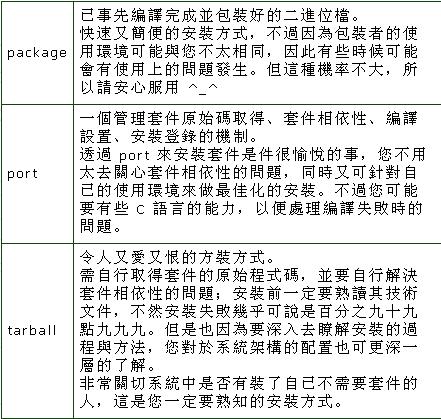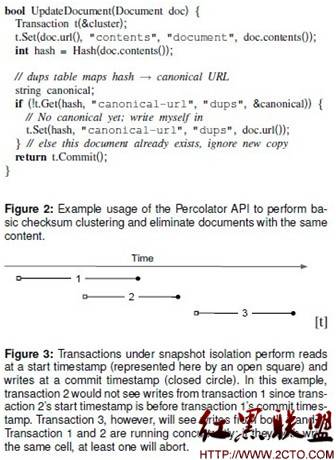快速搭建TimeServer与NISServer.
作者:梁尚锋 网名:好好先生/longfei原出处:www.chinaunix.net
参考文档:http://www.chinalinuxpub.com/read.htm?id=1337
http://www.fengnet.com/showart.asp?art_id=395&cat_id=10
http://chinaunix.net/jh/6/16555.html
感谢前人的付出
转载请保留上述信息
=========================================================================
春去春来,一转眼在CU已经混了一年了。这一年来,我在CU学了很多很多,感谢CU,感谢大家的支持和关爱。
我是做技术的,思来想去还是写一篇技术方面的文档,来纪念一下这个特别的日子吧。闲言少叙,言归正传。
一.Time Server的搭建(在此我们使用ntp:Network Time Protocol)
Time Server即时间服务器。我们经常会发现服务器上的时间不正确,这样会影响到我们的应用,有时甚至会带来一些不良后果。比如影响我们的备份,影响我们的数据库的更新等。比较常见的解决方法是与公网上的时间服务器同步(只用使用crontab执行00 02 * * * /usr/sbin/ntpdate 195.13.1.153就行了,后面的195.13.1.153就是公网上可以用的时间服务器之一),但这样做计算机必须能连接公网,这样也许会有一些安全问题。并且如果你的计算机在内网不能直接连接公网的时间服务器的话,那就……今天我们就来讲一讲搭建我们自己的时间服务器的做法。
方法一:时间服务器与公网上的时间服务器同步,其它机器与自己的时间服务器同步。缺点:时间服务器还要暴露在公网上。
步骤:
1.检查是否有相应的包
代码:
# rpm -qa |grep ntp
ntp-4.1.1a-9
chkfontpath-1.9.6-3
如果没有ntp这个包,则从光盘上装上。执行下面命令安装NTP的RPM包:
# rpm -ivh ntp-4.1.1a-9.i386.rpm(我使用的是redhat8.0,请根据你的实际情况安装对应的包)
2.修改配置文件
/etc/ntp.conf是ntp的主要配置文件,里面设置了你用来同步时间的时间服务器的域名或者IP地址,下面是到互联网同步时间的最基本的配置:
首先我们来定义自己喜欢的时间服务器:(可用的时间服务器,参看http://chinaunix.net/jh/5/100591.html,或者参看:http://www.eecis.udel.edu/~mills/ntp/servers.html)
代码:
server 195.13.1.153
server 194.137.39.67
接下来,我们设置上面两台服务器的访问权限,在这个例子中我们不允许它们修改或者查询我们配置在Linux上的NTP服务器。
代码:
restrict 195.13.1.153 mask 255.255.255.255 nomodify notrap noquery
restrict 194.137.39.67 mask 255.255.255.255 nomodify notrap noquery
说明:掩码255.255.255.255是用来限制远程NTP服务器的掩码地址。
然后设置允许访问的内网机器。请注意,配置中noquery已经去掉了:
代码:
restrict 192.168.1.0 mask 255.255.255.0 notrust nomodify notrap
在此例中,掩码地址扩展为255,因此从192.168.1.1-192.168.1.254的计算机都可以使用我们的NTP服务器来同步时间。如果你想限制的更严格一点,你可以修改你的掩码。
最后,也是最重要的是默认的限制配置要从你配置文件中删除,否则它将覆盖你所有的配置选项,你会发现如果不删除该配置,你的时间服务器将只能和自己通讯。如果ntp.conf中有以下一行,请将它注释:
代码:
# restrict default ignore
3.检查可用性
a.保存你的配置文件,然后对每个你在ntp.conf里配置的时间服务器执一下查询命令,确保这些上游时间服务器可用。
代码:
# ntpdate 195.13.1.153
27 Jun 10:12:01 ntpdate[25475]: adjust time server 133.100.11.8 offset -0.127154 sec
# ntpdate 194.137.39.67
27 Jun 10:12:06 ntpdate[25478]: adjust time server 133.100.9.2 offset 0.010008 sec
b.执行下列命令
# ntpq -p
…… ……输出略
一个可以证明同步问题的证据是所有远程服务器的jitter值是4000并且delay和reach的值是0。
代码:
remote refid st t when poll reach delay offset jitter
==============================================================================
LOCAL(0) LOCAL(0) 10 l - 64 7 0.000 0.000 0.008
* 0.0.0.0 16 u - 64 0 0.000 0.000 4000.00
4.设置自启动
为了使NTP服务可以在系统引导的时候自动启动,执行:
代码:
# chkconfig ntpd on
启动/关闭/重启NTP的命令是:
代码:
# /etc/init.d/ntpd start
# /etc/init.d/ntpd stop
# /etc/init.d/ntpd restart
5.客户端的设置
a.linux客户端
以root身份登录,执行crontab -e输入00 02 * * * /usr/sbin/ntpdate 192.168.1.1(换成你的Time Server的ip)
这样就会在每天的凌晨两点自动与Time Server同步时间。
b.windows Xp客户端
双击右下角的时间,出现“日期和时间属性”的窗口,选择Internet 时间,在服务器一栏中输入你的Time Server的ip,点击"立即更新",过几秒钟将能看到更新成功的提示。然后勾选“自动与Internet时间服务器同步”。点击确定。
方法二:时间服务器与自己的硬件时钟同步,其它机器与时间服务器同步。缺点:如果Time Server的硬件时钟不准确,则所有的时间将不准确。优点:更安全,没有暴露在公网上的机器。
unix类系统的时钟都有两种,一种是硬件时钟,一种是系统时钟。在此不在详述。步骤如下:
1.校准Time server的硬件时钟(可以直接在bios中设置),或者用hwclock命令来校对,例如: hwclock --set --date="6/16/04 11:14:05"
2.设置系统时间和硬件时钟同步:
输入:hwclock --hctosys.
3.修改配置文件
vi /etc/ntp.conf,我的ntp.conf如下
代码:
# Prohibit general access to this service.
# restrict default ignore
# Permit all access over the loopback inte易做图ce. This could
# be tightened as well, but to do so would effect some of
# the administrative functions.
restrict 127.0.0.1
# -- CLIENT NETWORK -------
# Permit systems on this network to synchronize with this
# time service. Do not permit those systems to modify the
# configuration of this service. Also, do not use those
# systems as peers for synchronization.
# restrict 192.168.1.0 mask 255.255.255.0 notrust nomodify notrap
# --- OUR TIMESERVERS -----
# or remove the default restrict line
# Permit time synchronization with our time source, but do not
# permit the source to query or modify the service on this system.
# restrict mytrustedtimeserverip mask 255.255.255.255 nomodify notrap noquery
# --- NTP MULTICASTCLIENT ---
#multicastclient # listen on default 224.0.1.1
# restrict 224.0.1.1 mask 255.255.255.255 notrust nomodify notrap
# restrict 192.168.1.0 mask 255.255.255.0 notrust nomodify notrap
restrict 192.168.1.0 mask 255.255.255.0 notrust nomodify notrap
# --- GENERAL CONFIGURATION ---
#
# Undisciplined Local Clock. This is a fake driver intended for backup
# and when no outside source of synchronized time is available. The
# default stratum is usually 3, but in this case we elect to use stratum
# 0. Since the server line does not have the prefer keyword, this driver
# is never used for synchronization, unless no other other
# synchronization source is available. In case the local host is
# controlled by some external source, such as an external oscillator or
# another protocol, the prefer keyword would cause the local host to
# disregard all other synchronization sources, unless the kernel
# modifications are in use and declare an unsynchronized condition
#
#server 127.1





